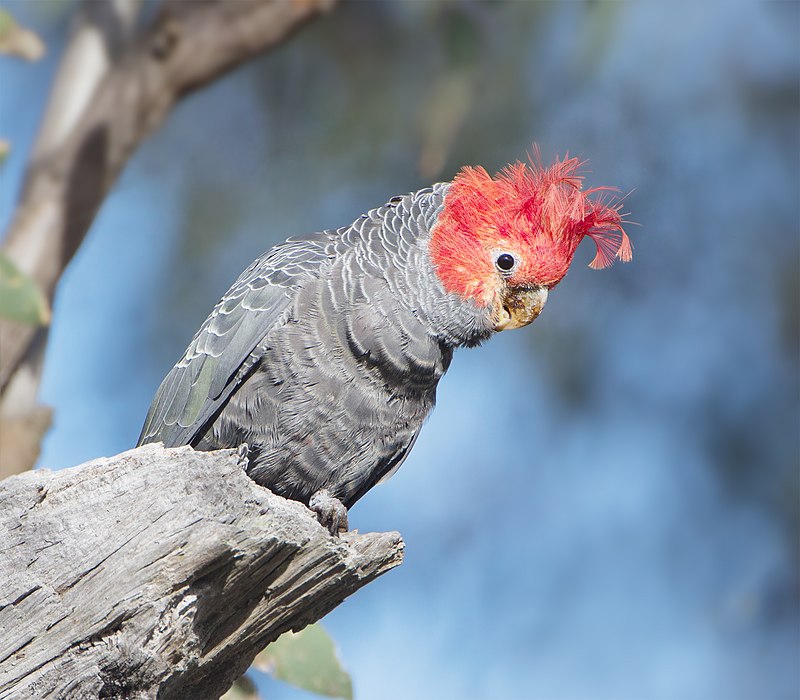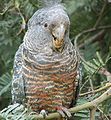The name gang-gang comes from a New South Wales Aboriginal language, probably from one of the coastal languages, although possibly from Wiradjuri. It is probably an onomatopoeic name.[2]

Breeding
Unlike most other cockatoos, gang-gangs nest in young, solid trees, the females using their strong beaks to excavate nesting cavities. Also, they breed in the canopy of most trees. They are sexually dichromatic.Status
Loss of older, hollow trees and loss of feeding habitat across south-eastern Australia through land clearing has led to a significant reduction in the numbers of this cockatoo in recent years. As a result, the gang-gang is now listed as vulnerable in New South Wales.[3]Taxonomy
The gang-gang cockatoo was most often allied with the white cockatoos of the genus Cacatua. This has always been controversial due to the unusual appearance and coloration of the bird, especially its sexual dichromatism. New research has finally resolved the matter, with the gang-gang cockatoo being recognized as a distinctive early offshoot of the calyptorhynchine (dark) cockatoos.[4] Considering the robust phylogeny of the cockatoos now established, a comparison of characteristics gained and lost during the evolution of cockatoos suggests that the gang-gang cockatoo—while of course much changed and adapted during the perhaps 20 million years since its last common ancestor with any other living species lived—is probably still very similar in overall appearance to how the earliest cockatoos would have looked, and certainly the most primitive-looking of the species alive today.Gallery
- Male eating Acacia baileyana seeds






No comments:
Post a Comment
Note: Only a member of this blog may post a comment.